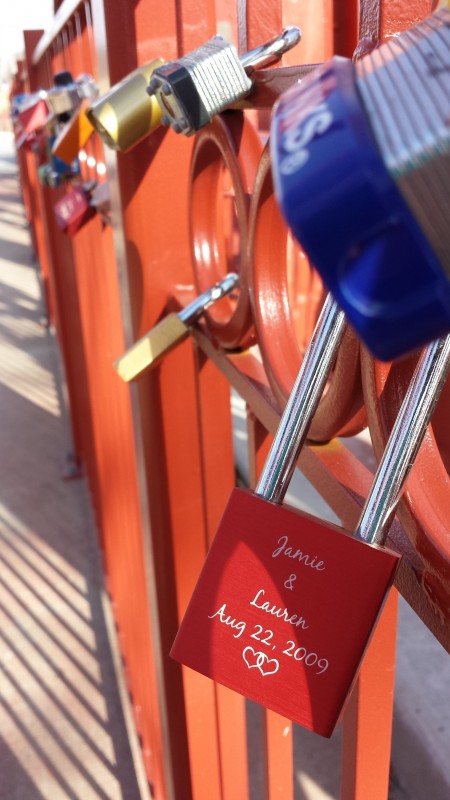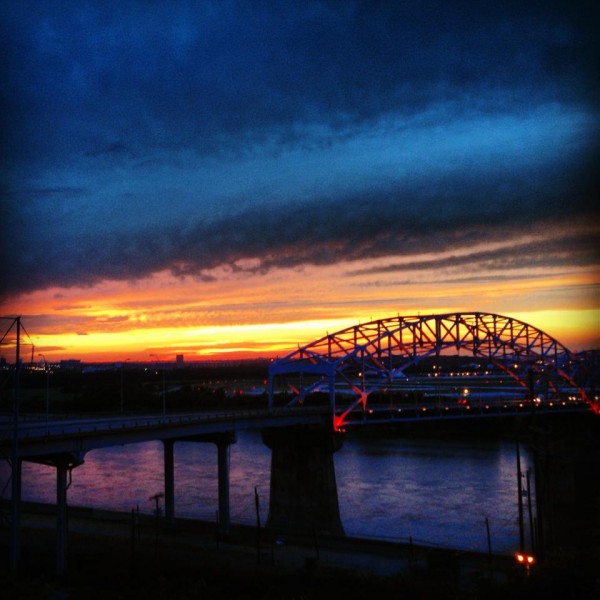Bridging Kansas City into the Future
ASB Bridge, Hannibal Bridge, Octave Chanute, Town of Kansas Bridge, Paseo Bridge, Pedestrian bridge, Love Lock Bridge
A Look Into Kansas City’s Bridges
Armour, Swift, Burlington Bridge:
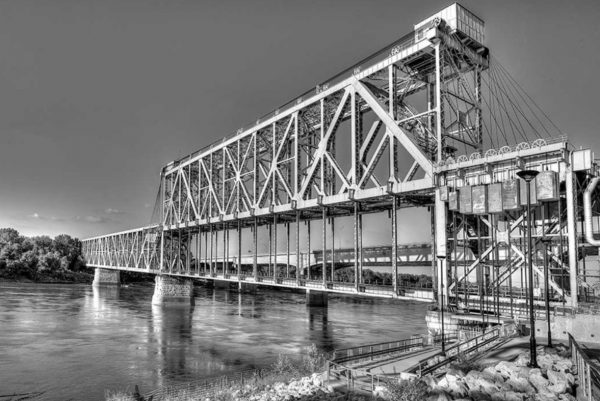
www.davidremley.com
William E. Winner, real estate tycoon and businessman in the late 1800s, bit off more than he could chew when he started his crusade to develop the ASB Bridge in Kansas City in 1888. At the time, the only bridge in town, the Hannibal Bridge, only carried railroad traffic. Winner knew that the area would need a bridge for vehicles if the town wanted to continue to prosper. He started the bridge-building project strong by using funds from his business. However, at the start of construction, Winner did not end up with enough revenue to finish his massive project. He left almost ten out-of-place stone piers on the Missouri River with nothing more than a few lanterns strung on them for passing ships to see. For more than 20 years, the bridge’s piers remained as reminders of Winner’s past dreams. Around this time, the Armour and Swift meat-packing companies and Burlington Railroad, hence the name, decided to employ John Alexander Low Waddell as the architect and fund the rest of the development of the bridge, which finally opened in 1911. The ASB Bridge is a vertical-lift bridge—a bridge that lifts vertically to allow ships under.
Broadway Bridge:
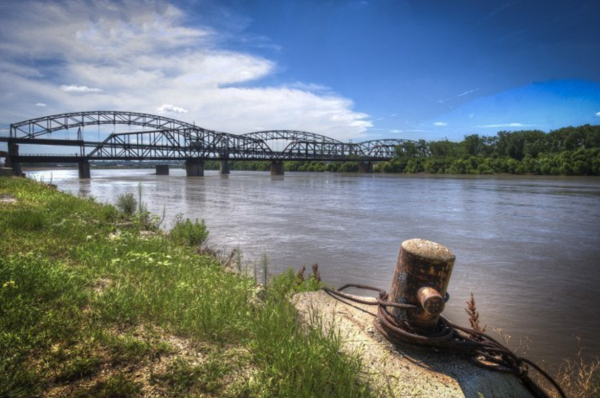
www.davidremley.com
As plane-travel popularity began to rise in the 1950s, the Broadway Bridge offered Kansas Citians more than three beautiful arches. Built in 1956, the then-new Broadway Bridge gave them easy-access to the ever growing Municipal Airport, now known as the Charles B. Wheeler Downtown Airport, from the north. At a hefty cost of almost $12 million, which would be close to $100 million today, the city installed a toll booth through the year 1991 to help pay for the bridge. Although something to rejoice about more than 60 years ago, the Broadway Bridge tends to cause more headaches than cheering now with more and more traffic crossing the bridge every day. Many are pushing to replace the bridge and make it more commute-friendly, but we’ll see when that happens.
Hannibal Bridge:
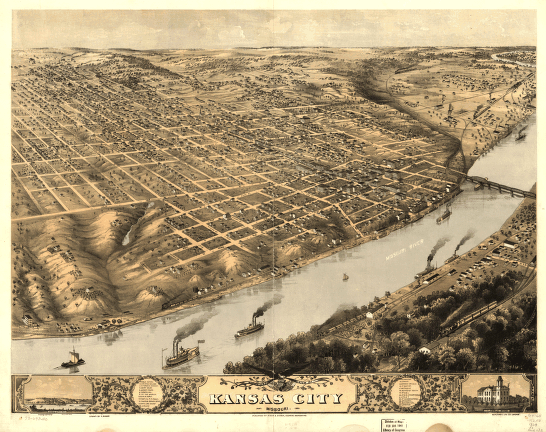
www.historickansascity.org
Before the Hannibal Bridge opened in 1869, Kansas City was simply a messy “gullytown” known for its deep, muddy trenches used for streets, which wasn’t as glamorous as many may think. Sitting on the limestone bluff over the confluence of the Kansas and Missouri Rivers, Kansas City would be stuck in the past if not for the development of the transcontinental railroad. In 1865, Kansas City turned into a strong connection to the East and West thanks to railroads built near the south of the Missouri River. The city was still missing a connection with the North and South. In order to make that connection and to put Kansas City on the map, three of Kansas City’s wealthiest men, Robert Van Horn, Johnston Lykins and Kersey Coates, got together to create a plan for a new railroads in the area. This team of men boosted the city past its competition, Leavenworth, Kan., for the railroads. In the early 1860s, the world-famous bridge-builder Octave Chanute started his two-and-a-half-year mission to build the Hannibal Bridge. On July 3, 1869, Kansas City became a city of the future and the residents knew it. More than 40,000 Kansas Citians gathered around the bridge to celebrate the first train crossing. There were parades, fireworks, decorations, picnics, you name it, and they had it to celebrate. This bridge without a doubt kick-started the growth of Kansas City into what it is today.
The Paseo Bridge and Christopher S. Bond Bridge:
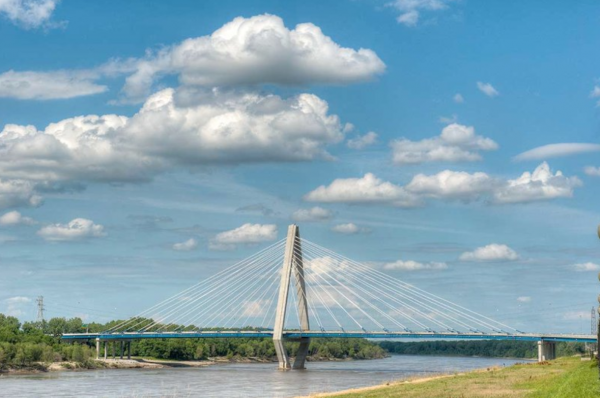
www.davidremley.com
As WII came to an end and factories started to build automobiles for domestic use again, rather than machine parts for the war, cars became increasingly popular among middle-class citizens. During the early 1950s, L. Perry Cookingham, city manager, decided to develop a highway system that circled around the heart of the city to appease to this ever-growing love of cars. The Paseo Bridge became an intricate part of this system in order to provide easy access to the growing Northland. In 1954, The Paseo Bridge opened with its one-of-a-kind design that earned the bridge an award of merit through 1959 for being the “most beautiful steel bridge.” It even became a national corridor soon after. Unfortunately, the Paseo Bridge simply wasn’t designed to grow with the city with only two lanes going north and two going south. The bridge always seemed to be under construction in order to maintain its stamina for the thousands of motorists and commuters—it needed more space, plain and simple. More than 50 years after the first car passed over the Paseo Bridge, Kansas City officials decided the bridge needed to be replaced. In 2008, plans for the dual-span, cable-stayed Christopher S. Bond Bridge, named after Missouri Sen. Christopher “Kit” Bond who worked to develop funding for the bridge, went into work. This bridge, built just down the river of the Paseo Bridge and designed by Bradley Touchstone, is large enough to expand with Kansas City’s needs. The Paseo Bridge officially “retired” in 2010 and was soon demolished when the Christopher S. Bond Bridge opened for traffic.
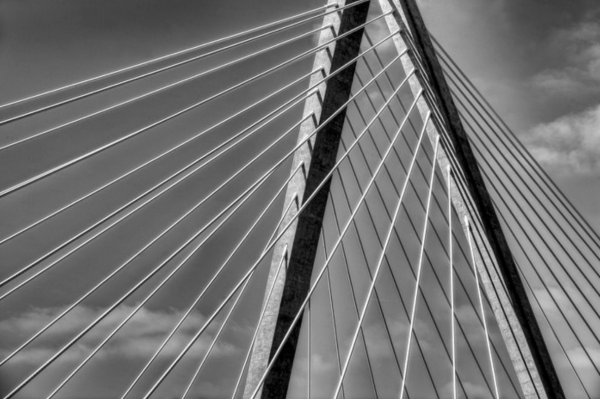
www.davidremley.com
Town of Kansas Pedestrian Bridge:
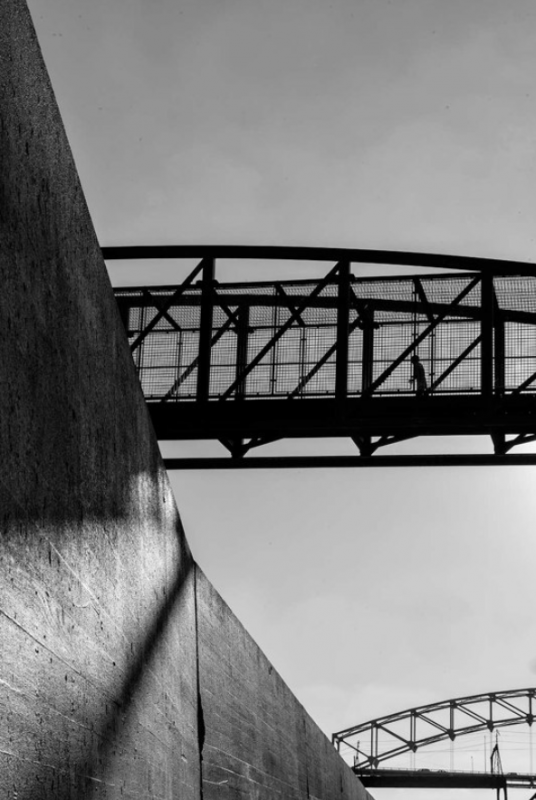
www.davidremley.com
The Town of Kansas Bridge gives River Market residents, and all visitors alike, a quiet connection to the mighty Missouri River. Built in 2002, the Town of Kansas Bridge was a part of the area-wide initiate to “clean-up” the River Market area. The bridge isn’t your typical bridge because it doesn’t cross the Missouri River. Instead, it crosses over the train tracks and the old industrial sites of Kansas City. The name “Town of Kansas” derived from Kansas City’s humble beginning when the cow-town first popped up thanks to a small natural levee on the river in 1834. Now the almost 650-foot pedestrian bridge pays tribute to Kansas City’s original roots with information plaques, ranging from info about the Gillis Opera House that stood just over the bluff that towers over the bridge in the 1800s to our Lewis and Clark upbringing, standing every few feet along the bridge to give walkers, cyclists and couples hand-in-hand a quick look into Kansas City’s past.
Red Bridge (Love Lock):
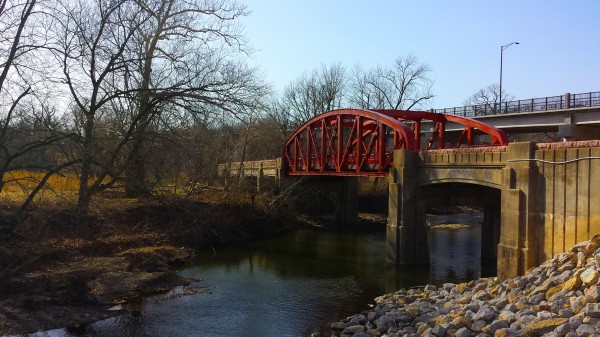
Tucked in the lush trees and standing over the bubbling Blue River of Minor Park, the Red Bridge attracts lovers from all around because of it story-book look. On any given day, the railing of the bridge is covered with padlocks scribbled with couple’s names. Yes, Red Bridge is also known as Kansas City’s “Love Lock” bridge, perhaps because of its red heart-like color? More than 150 years ago, before the bridge became known for its romantic ambiance, covered wagons had a hard time crossing the Blue River. Ruts from these wheels can still be seen in the park. In 1859, Colonel George N. Todd, a Scottish stonemason, built a 100-foot wooden bridge and painted it red, thus the name. The wooden bridge didn’t last and about 40 years later it was replaced by the “tin bridge.” Keeping true to tradition, this bridge was also painted red. In 1933, and then in 2000 to add a vehicular structure, the bridge was replaced yet again. Now, the little Red Bridge is no longer used for cars, but rather it gives Kansas Citians a picturesque place for a stroll in the park.
